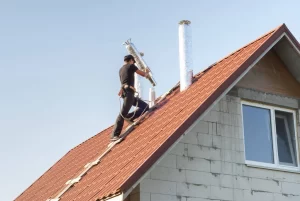 Proper roof ventilation is an often overlooked aspect of home maintenance, yet it plays a crucial role in ensuring the longevity of your roof, the comfort of your living space, and even the energy efficiency of your home. Today, we will delve into the significance of proper roof ventilation and explore the various benefits it offers.
Proper roof ventilation is an often overlooked aspect of home maintenance, yet it plays a crucial role in ensuring the longevity of your roof, the comfort of your living space, and even the energy efficiency of your home. Today, we will delve into the significance of proper roof ventilation and explore the various benefits it offers.
Understanding Roof Ventilation
Roof ventilation refers to the process of allowing air to flow freely through the attic space and the area beneath the roof. It involves the installation of intake vents (usually placed along the eaves) and exhaust vents (typically positioned near the ridge) to create a balanced airflow system. This system facilitates the exchange of stale, hot air with fresh outdoor air, helping to regulate temperature and moisture levels in the attic.
Controlling Temperature and Moisture
Proper roof ventilation is essential for maintaining a balanced temperature within your home. During the hot summer months, a well-ventilated roof allows hot air to escape, preventing excessive heat buildup in the attic. This, in turn, reduces the strain on your air conditioning system, leading to energy savings and increased comfort throughout your home. In colder seasons, roof ventilation helps prevent the formation of condensation and ice dams, which can lead to moisture damage and compromised insulation.
Extending Roof Lifespan
Excessive heat and moisture can wreak havoc on your roof’s structure, leading to premature deterioration and costly repairs. By ensuring proper ventilation, you can mitigate the risk of damage caused by excessive heat, trapped moisture, and condensation. Adequate airflow helps to regulate temperature and moisture levels, preserving the integrity of the roofing materials and prolonging the lifespan of your roof.
Preventing Mold and Rot
Improper ventilation can create an environment ripe for the growth of mold and rot. Excess moisture trapped in the attic can lead to the formation of mold spores. And this not only compromises indoor air quality but also poses health risks to the occupants of the home. Furthermore, moisture buildup can cause wood to rot, compromising the structural integrity of the roof. Proper roof ventilation helps maintain dry conditions, minimizing the risk of mold and rot growth.
Energy Efficiency and Cost Savings
In addition to the benefits mentioned above, proper roof ventilation contributes to overall energy efficiency. By allowing hot air to escape during the summer months, your air conditioning system doesn’t have to work as hard to cool your home. This reduction in energy consumption can translate into significant cost savings on your utility bills.
Additionally, a well-ventilated roof can help prevent the premature aging of roofing materials. It also reduces the need for frequent repairs and replacement, which also saves you money in the long run.
Proper roof ventilation is an essential element of a well-maintained home. By ensuring adequate airflow in your attic space, you’ll create a healthier, more comfortable, and more durable living environment for you and your loved ones.
Picture Credit: VistaCreate
